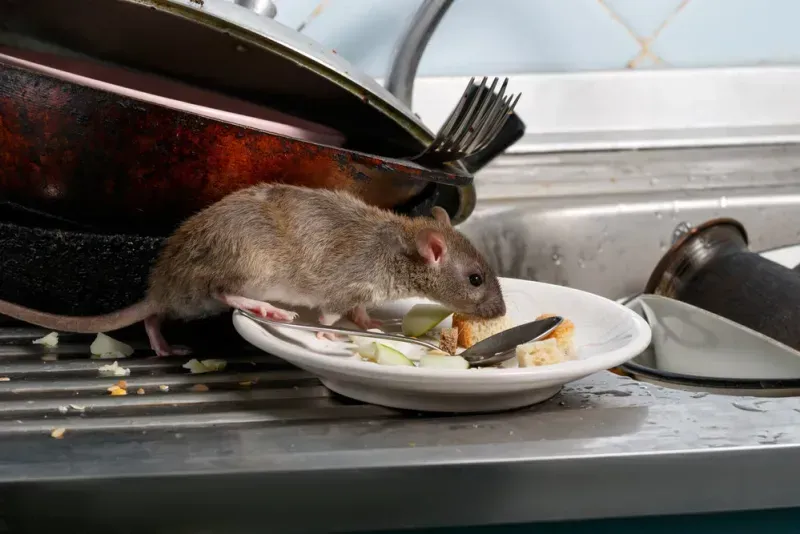Rodents
Rodents
Norway Rats
Norway rats are nocturnal and usually come inside during the fall when food is scarce. They can gnaw through almost anything including plastic, lead pipes, dry wall.
They are also good climbers and very good at burrowing in and around structures. Norway rats can grow 12-18” long with a 5-8” tail.
A single rat would have approximately 50 droppings a day. They often nest in basements, garages; they can come into a home through a hole the size of a quarter. They not only cause destruction to the home, but they are serious carriers of diseases such as jaundice, cowpox fever, plague, trichinosis, and salmonellosis. Norway rats infect food and bring fleas inside with them.


Mice
The house mouse is one of the most bothersome and economically significant pests. They can live and thrive on human or pet food; they soil food-preparation areas with their feces which contain bacteria that causes salmonellosis.
Mouse nests are usually finely shredded paper, or similar material; mice have a musky odor that identifies their presence. Males mark their territory with urine. Mice are approximately 5-7” long including the 3-4” tail. Mice eat often and nibble on their food. They have a keen sense of hearing, smell, taste and touch.
They can slip through a crack that a pencil will fit in..
Norway Rats
Norway rats are nocturnal and usually come inside during the fall when food is scarce. They can gnaw through almost anything including plastic, lead pipes, dry wall.
They are also good climbers and very good at burrowing in and around structures. Norway rats can grow 12-18” long with a 5-8” tail.
A single rat would have approximately 50 droppings a day. They often nest in basements, garages; they can come into a home through a hole the size of a quarter. They not only cause destruction to the home, but they are serious carriers of diseases such as jaundice, cowpox fever, plague, trichinosis, and salmonellosis. Norway rats infect food and bring fleas inside with them.


Mice
The house mouse is one of the most bothersome and economically significant pests. They can live and thrive on human or pet food; they soil food-preparation areas with their feces which contain bacteria that causes salmonellosis.
Mouse nests are usually finely shredded paper, or similar material; mice have a musky odor that identifies their presence. Males mark their territory with urine. Mice are approximately 5-7” long including the 3-4” tail. Mice eat often and nibble on their food. They have a keen sense of hearing, smell, taste and touch.
They can slip through a crack that a pencil will fit in..
Beckley: (304) 252-9234
Lewisburg: (304) 647-9903
Pineville: (304) 732-6298
Welch: (304) 436-2244
Charleston: (304) 346-6565
Logan: (304) 752-0349
Princeton: (304) 487-5789
Williamson: (304) 235-2113
You can also reach us at: [email protected]
© Copyright 2023 Phillips Termite and Pest Control, Inc.
Beckley: (304) 252-9234
Lewisburg: (304) 647-9903
Pineville: (304) 732-6298
Welch: (304) 436-2244
Charleston: (304) 346-6565
Logan: (304) 752-0349
Princeton: (304) 487-5789
Williamson: (304) 235-2113
You can also reach us at: [email protected]
© Copyright 2023 Phillips Termite and Pest Control, Inc.
